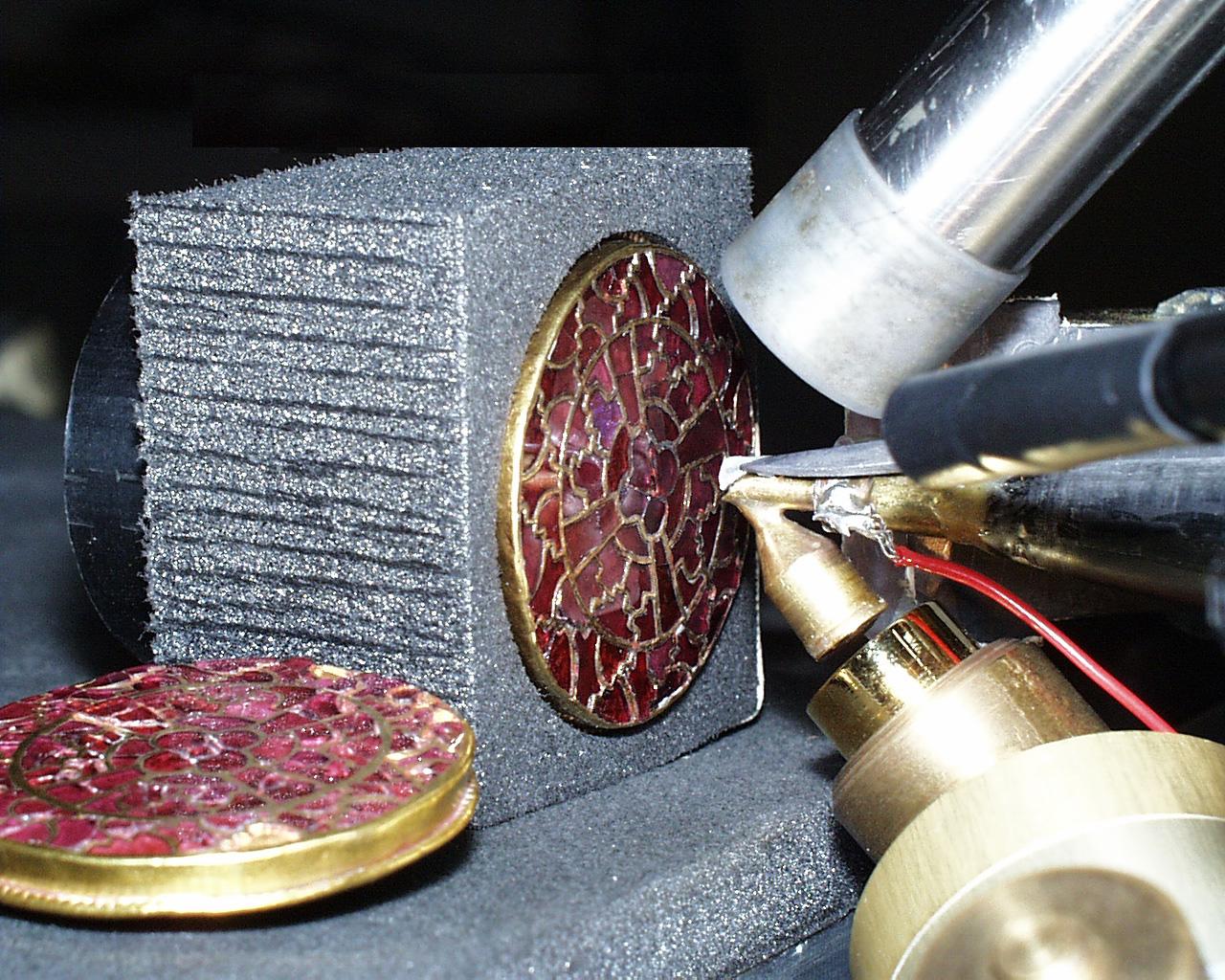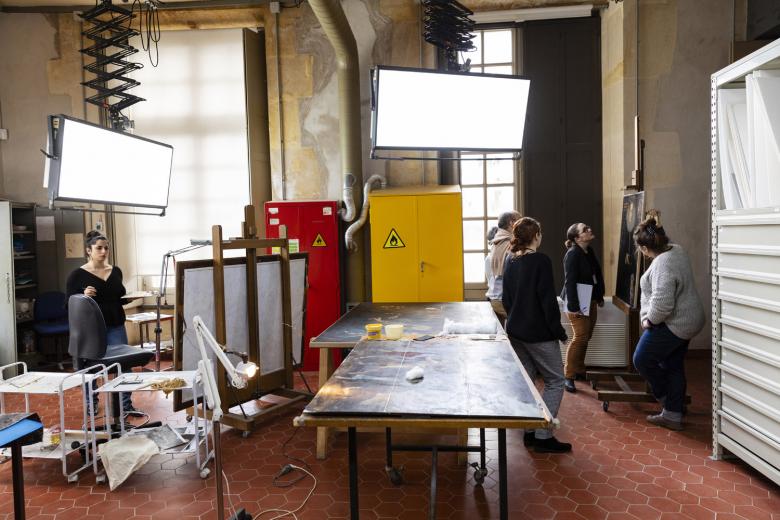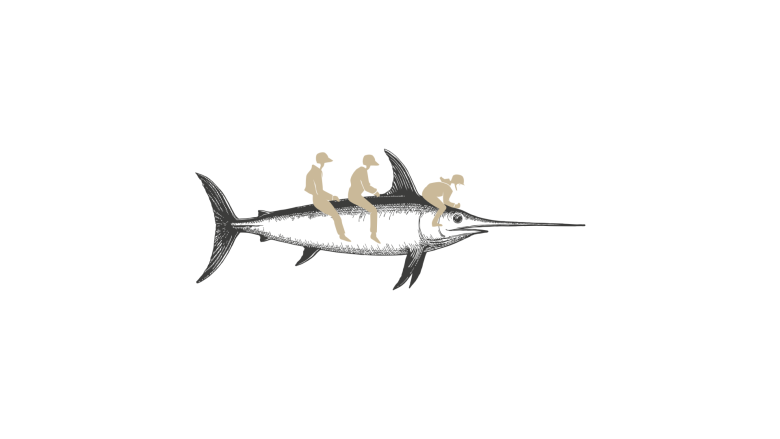For the english version, please scroll down the page
L’objectif de ce colloque de deux jours est de valoriser les programmes de recherche sur la circulation des grenats, gemmes emblématiques du style cloisonné qui, aux Vème et VIème siècles, ont caractérisé presque tout l’Occident, de la Mer Noire à l’Angleterre et de la Scandinavie à l’Afrique du Nord. La majorité de ces travaux a été menée grâce à l’accès transnational à l’accélérateur AGLAE du C2RMF, ouvert depuis plus de 10 ans aux scientifiques du patrimoine dans un cadre européen, à la suite du programme « Grenats », initié en 1999 sur les collections du MAN. Ces recherches ont porté sur les grenats des prestigieuses collections archéologiques des musées de France (notamment au MAN et au Cabinet des Médailles de la Bibliothèque nationale de France) et d’Europe (Allemagne, Belgique, Pays-Bas, Roumanie, Royaume-Uni, etc.) avec des résultats le plus souvent inédits.
La première journée, organisée au MAN, sera consacrée à la restitution des résultats des analyses de grenats effectuées dans le cadre des programmes Eu-ARTECH, CHARISMA et IPERION et d’autres programmes en Europe (International Framework / Weltweites Zellwerk). Si l’analyse de ces gemmes a révélé que les mêmes sources - en majorité en Inde et à Ceylan (Sri Lanka) - ont été exploitées partout en Europe au Vème et VIème siècles, ce sont les gisements européens qui ont été exploités ultérieurement, mettant en lumière un bouleversement du commerce indo-européen vers 600. Les participants pourront visiter l’exposition « Austrasie, le royaume mérovingien oublié » à la pause méridienne et seront invités à l’inauguration de l’exposition en soirée.
La deuxième journée, organisée au C2RMF à Paris, portera sur la place du commerce des grenats dans les échanges entre l’Inde et l’Europe du haut Moyen Âge, en particulier avec nos invités archéologues indiens. Les routes terrestres et maritimes seront évoquées (Route de la Soie, Berenice, etc.). De même, les grenats bruts et les perles taillées mis au jour dans les fouilles des emporia des côtes indiennes (Arikamedu) et des ateliers de pourtour méditerranéen (Alexandrie) seront considérés. Enfin, une extension aux grenats de l’Antiquité tardive, présents notamment sur des colliers, bagues et intailles, permettra de relier la trame des échanges aux époques antérieures. Une table ronde permettra d’élaborer une synthèse des recherches, de tracer des perspectives et de planifier la publication.
Pour participer au colloque, les participants doivent s’inscrire par mail à thomas.calligaro@culture.gouv.fr. Du fait du nombre limité de places disponibles dans les auditoriums du MAN et du C2RMF (80 places), l’inscription sera confirmée par retour de mail.
Pour plus d'informations, voir le programme :
The objective of the two-day workshop is to present the results of research projects on the circulation of the garnets, the emblematic gem of the cloisonné style which, in the 5th and 6th centuries, characterized almost all the Western world, from the Black sea to Anglo-Saxon territories and from Scandinavia to North Africa. A majority of these investigations has been carried out using the transnational access to the AGLAE accelerator of the C2RMF open for more than a decade to the scientists working in Heritage in Europe, following the ‘Merovingian Garnet’ programme initiated in 1999 on the collection of the MAN. These programmes focused on garnets from famous archaeological museum collections from France (notably from the MAN and the Cabinet des Médailles de la Bibliothèque nationale de France/Bnf) and elsewhere in Europe (Germany, Belgium, the Netherlands, Romania, United Kingdom, etc.) with often unreleased results.
The first day, to be held at the MAN in Saint-Germain-en-Laye, will be devoted to the presentation of the results of the garnet analyses carried out in the framework of the European programs Eu-ARTECH, CHARISMA and IPERION and other programs elsewhere in Europe (International Framework / Weltweites Zellwerk) or in the rest of the world. While garnet analyses has shown that a restricted number of sources, mainly from India and Ceylon (Sri Lanka), were used everywhere in Europe during the 5th and 6th centuries, those exploited later are of European origin, a fact indicating a major change in the Indo-European trade around 600.
The participants will visit the exhibition ‘Austrasia, the forgotten Merovingian Realm’ during the mid-day break and will be invited to the inauguration of the exhibition in the evening.
The second day, to be held at the C2RMF in Paris, will be devoted the place of the garnet trade in the long-distance commerce between early Middle Ages India and Europe, and in particular with archaeologists of ancient India. The terrestrial and maritime routes will be considered (Silk Road, Berenike, etc.). The investigation of garnet raw and worked beads excavated from workshops in Mediterranean rim and from coastal emporia in India will be reported. Finally, the extension of the program to garnets from late Antiquity, notably present on necklaces, rings, intaglio, will allow establish the link with preceding periods. A round table discussion will he organized to provide a synthesis, draw perspectives, and plan the publication.
Participants must apply to the meeting by mail to thomas.calligaro@culture.gouv.fr. Due to limited places in the C2RMF/MAN auditoriums (about 80 seats), registration will be confirmed according to availability.
For more information :



